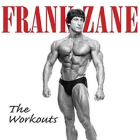Q: My question is about the proper number of sets. Some authors claim that it’s not necessary to train to failure. Others recommend going beyond failure, and still others say that only the last set should approach concentric failure. Am I misunderstanding something? When doing work sets, should I use the heaviest weight first and then adjust my weight downward for each successive set or use the same weight for all sets, making my last set the only hard one? Or should I work up to that final heavy set? Or should I use a pyramid system? I know that they all probably work, but I’d like to know the most accepted way of doing it.
A: You just answered your own question: They do all work, but not for the same reason. For example, a descending-resistance-rep/constant-set scheme will trigger an increase in energy substrate synthesis, while a constant-rep/high-set approach like the German Volume workout, which you can easily find on the Internet, has been shown to bring a record level of progress.
The old standard, a wide pyramid of training—15-12-10-8-6-4-2-1—is still advocated in most college books for gaining mass and is probably the least effective because it doesn’t provide enough repeated work at a given intensity. With a rep spread like that you start at 66 percent of max, 15 reps, and finish at 100 percent of max, one rep. It’s my opinion that rep-and-set schemes should not spread over more than 15 percent of max—for example, 70 to 85 percent, 75 to 90 percent, 85 to 100 percent. So a 5-4-3-2-1 pyramid would work (85 to 100 percent), but not a 12-10-8-6-4-2-1 (70 to 100 percent). Incidentally the 5-4-3-2-1 is a favorite of Mauro Di Pasquale, who used it to reach his powerlifting successes on the international scene.
Narrow pyramids—3-2-1—done two to three times are better known as wavelike loading and are quite effective at developing relative strength.
The key point is that your body will adapt to any routine in six workouts. No single best system works all the time. It works only for the time it takes you to adapt to it.
The point that some of my colleagues are making is that, contrary to the ideas of people like Mike Mentzer, there’s no absolute need to train to concentric muscle failure on every set. Recommending a given load repeated for many sets means favoring adaptation through the law of repeated efforts. That’s the basis of the aforementioned German Volume training, which I authored almost 20 years ago.
Q: What’s your favorite strength-training book?
A: A classic book that has very productive routines is Developing Physical Strength by Anthony Ditillo, which was available from IRON MAN years ago. Nowadays you need to purchase it as a used book. I’m often asked which book I’d rescue from my burning house. That’s the one. Even though it’s more than 25 years old and the rationale for the effectiveness of the routine isn’t particularly scientific, the routines outlined are still some of the best out there (the human genome has changed only 0.02 percent in the last 40,000 years!). Ditillo is a big advocate of power-rack training and voluminous work. Here are the reasons I like his training philosophy:
2) He incorporates a lot of neural training—near maximal loads for repeated efforts. With his system, the gains in strength will be locked in your body for a long time. His methods help you achieve maximal neural drive.
3) No fancy equipment is necessary. For most routines all you need is a power rack, a bench, dumbbells and a chinning bar.
4) He devotes chapters to overcoming sticking points on lifts—i.e., bench, squats, deadlifts—or bodyparts. If you’re interested in gaining, particularly in the legs, back and traps, Ditillo has some good advice for you. I recommend the book strongly for the power bodybuilder—the bodybuilder who wants bigger muscles that can express high levels of strength.
This book is not for:
a) Pump artists. You’ll find no routines that involve bombing and blitzing.
b) Visuals. Don’t expect the slick photography of Michael Neveux or Chris Lund. This book is definitely not a source of visual inspiration, but the wealth of valuable training information sure makes up for the lack.
c) Mike Mentzer fans. Ditillo believes in the physiological effects of the well-proven laws of repeated efforts and adaptation.
d) Machine aficionados. Basic barbell and dumbbell work—no chrome, sprockets or nylon pulleys required.
Q: A few years ago I read an article of yours in a bodybuilding magazine concerning the critical drop-off point as it applies to relative strength training. You stated that when a muscle reaches a 5 to 7 percent decrease in performance (either in weight or reps), that particular exercise should be terminated. My problem is that I usually reach that point after only one or two sets. For example, I was performing incline dumbbell presses with 110-pounders for four reps at a 5/0/5/0 tempo. After four minutes’ rest, I could barely perform two reps at the same tempo. I dropped down to 100 pounds for the third set and got three reps and 90 pounds for the fourth and got three reps. Each set had four minutes’ rest. The same thing happens no matter what rep tempo I use. My question is, Should I continue to perform multiple sets and just allow the weights to drop, or should I terminate the exercise after only one or two sets?
A: Please note that the 7 percent rule applies for the training of maximal strength—loads of 85 percent of maximum or more. In classical bodybuilding training, I recommend no more than a 20 percent drop-off.
After such long rest intervals, for the given reps and tempo, I’m amazed that you have such limited ability to repeat loads. Normally it’s 2 percent per set, between sets; for you it’s near 10 percent! That is, in fact, very poor work capacity.
It could be due mainly to two things:
1) Genetically poor work capacity. For your bodybuilding goals you may need to do more exercises for fewer sets. In other words, instead of doing two exercises for four to five sets each, you may want to try three to four exercises for two sets each.
2) Inadequate diet. In your case I’d pay attention to your nutrition—you may not be eating enough carbs to have sufficient glycogen storage.
Hope that helps. Write to me and let me know.
Q: I don’t know what to do about my left arm. I see that it’s weaker than my right one, and whenever I exercise biceps or triceps, the right arm is doing most of the work. Also, recently my left triceps has been kind of weird. When I flex it, it doesn’t get hard and isn’t as big as the right one.
A: Before we get into the training side of it, in my opinion, you require the attention of a qualified health practitioner—either a chiropractor or an osteopath who does manipulation. I may not have all the information I need, but your recent inability to contract the muscles in your left arm leads me to believe that the neural drive from your brain isn’t getting to your muscle. Thus you most likely have some cervical trauma at the C-5/C-6 level. To find a qualified practitioner, phone (719) 473-7000 for a referral for a good chiropractor.
I’ve found that once the vertebral problem has been fixed, a few acupuncture treatments accelerate the recovery of the weakened limb. Unfortunately, the level of competency of acupuncturists isn’t well regulated. So you may end up with some Pacific Rim refugee who claims to be one and will recommend that you absolutely need to purchase panda semen extract from his cousin at $235 a gram.
Once the neural problem has been fixed, I recommend that you work arms with dumbbells only. Perform an equal number of reps and sets with each arm. If you like single-arm movements like concentration curls, always start with your nondominant arm, and match the number of reps with your dominant arm. Within less than a month the problem should be fixed.
Editor’s note: Charles Poliquin is recognized as one of the world’s most successful strength coaches, having coached Olympic med-alists in 12 different sports, including the U.S. women’s track-and-field team for the 2000 Olympics. He’s spent years researching European journals (he’s fluent in English, French and German) and speaking with other coaches and scientists in his quest to optimize training methods. For more on his books, seminars and methods, visit www.CharlesPoliquin.net. Also, see his ad on page 259. IM




















You must be logged in to post a comment Login